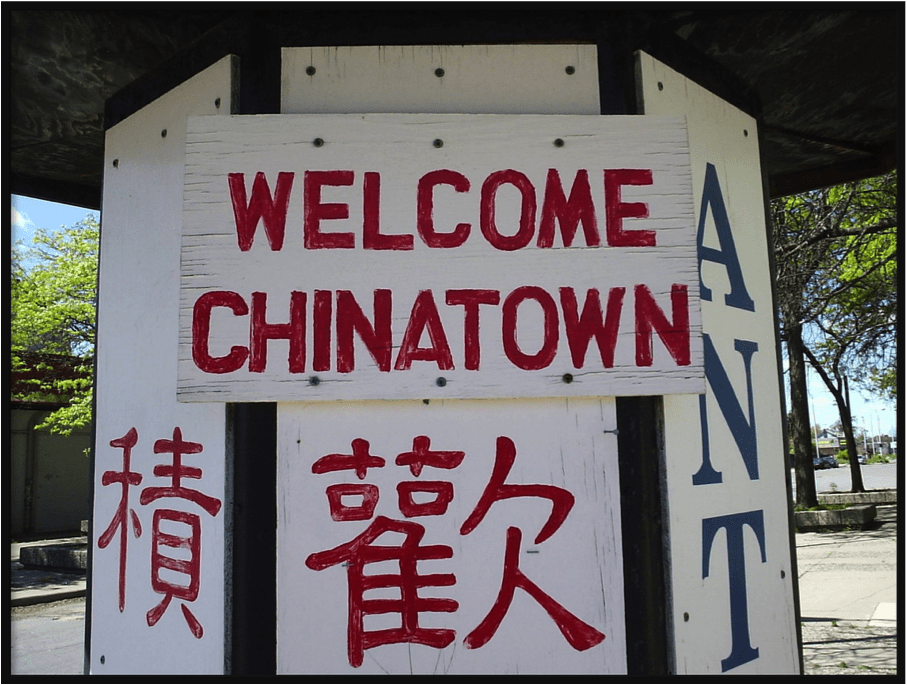Traces of Detroit’s Past Chinatowns
It would be easy to pass this corner without realizing you’ve traveled through Detroit’s Chinatown. This small neighborhood within the Cass Corridor has been mostly abandoned for over a decade, but it was once a cultural center for Chinese and Chinese Americans in Metro Detroit.
Two monuments, one on the corner of Peterboro and Cass, and another on the corner of Peterboro and Second are the few remaining markers of the city’s second Chinatown – built in the 1960s.
It’s hard to pinpoint exactly when the first Chinese migrants came to Detroit – since reporters in the 1800s did not differentiate between the many cultures of East Asia. In 1874, 14 Chinese washermen were living in Detroit. The population grew slowly and by the 1920s reached 2,000.
In 1913, Chinese Detroiters lived all over downtown. Their cultural base was at the On Leong Association building at 162 Randolph. In 1917, the Association bought the surrounding land to build the new headquarters, stores, and apartments of the city’s first Chinatown. The neighborhood was located downtown at an intersection that no longer exists, 3rd and Porter, just south of Michigan Avenue – today the area is a parking lot.
Between the 1920s and 1950s Detroit’s first Chinatown was a vibrant community that brought Chinese Americans together to celebrate New Year’s and other festive occasions.
In the early 1960s, the Detroit Housing Commission condemned the downtown Chinatown neighborhood as part of their ‘slum clearance’ program. Local merchants hoped to relocate Chinatown to the nearby International Village, but the plans for the village fell through.
Although many residents moved to the suburbs during the 60s, prominent Chinatown cornerstones Chung’s restaurant and On Leong relocated to Cass Avenue near Peterboro, anchoring a new, second Chinatown.
A Chinese school, a grocery, restaurants, and bars followed. However, by the 1970s, the Cass Corridor neighborhood was seen as unsafe and visitors returned less frequently.
After 79 years in business, Chung’s closed in 2000, and the second Chinatown was abandoned.
Until its removal by Entertainment District developers in 2016, a vibrant mural hung on the side of the former On Leong Association building that commemorated civil rights issues in Detroit affecting several ethnic groups in the city’s history. The Lodge and Chrysler Freeway were shown edging out the original Chinatown and the African American Paradise Valley neighborhoods that were located downtown. Martin Luther King Jr. is depicted delivering his “I Have a Dream” speech for the first time in Detroit. Lily Chin is shown holding a picture of her Chinese American son Vincent, who was the victim of a hate crime in 1982 when he was killed by laid-off autoworkers because they were angry at the success of Japanese automakers. Chin’s murderers were sentenced to two years probation.
The mural and corner monuments in the ‘new’ Chinatown are disappearing traces of the vibrant community of Chinese Americans that once frequented downtown and Midtown Detroit. Soon, the Cass Corridor neighborhood will be revitalized as part of the city’s new Entertainment District. A new restaurant, bike shop, and tattoo parlor have recently reoccupied the area. It remains to be seen whether any physical markers of the former Chinatown will survive as the new vision of the neighborhood takes shape.

